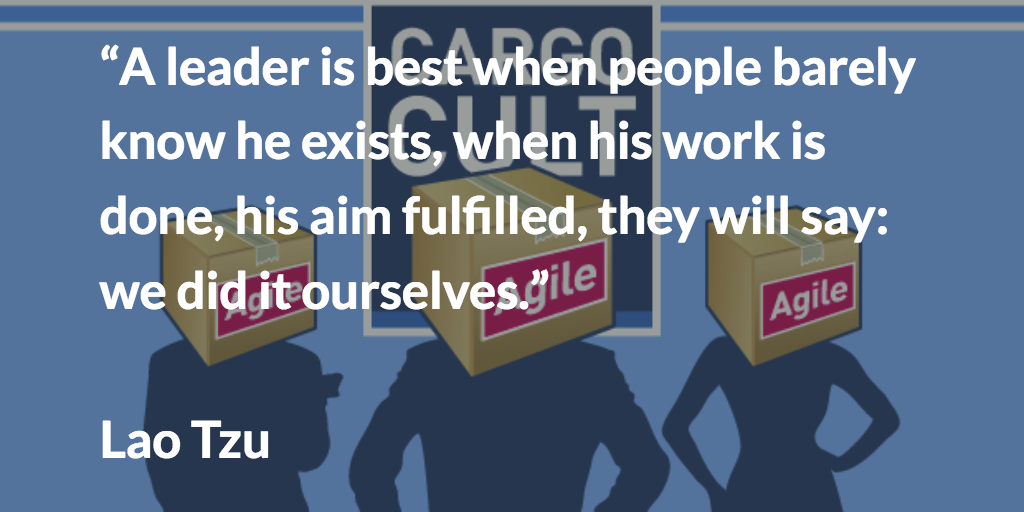Agile Micromanagement in the technology of Autonomy, Mastery and function
April 10, 2016
Agile Micromanagement: TL;DR
Agile micromanagement is as a result the center administration’s resistance to change. despite higher information, altering a company right into a finding out one, that embraces experimentation and failure isn’t in the perfect pastime of everyone. Self-organizing, empowered groups continuously struggle with the center administration’s power to execute on personals agendas.

Agile and Its Proximity to Micromanagement
On the one aspect, we are becoming increasingly higher at working out what administration types are in reality developing worth in the generation of the data economic system. service management, and self-organization as in holacracy, as an example.
And we do have an idea, backed through one of the vital powerful findings in social science, what drives the person information worker. consistent with Daniel purple, lasting motivation in the 21. century is fueled intrinsically by way of autonomy, mastery, and purpose.
On the other facet, one of the most promising strategies—agile in its quite a lot of flavors–has meanwhile received kind of a tainted popularity. It has change into steadily related less with empowerment and self-organization, but micromanagement.
the concept agile is bordering on micromanagement will not be a brand new one. Mike Cohn himself means that it’s the staff, that’s micromanaging themselves for their own merit. but he appears to be the only one to make the most of the phrase “agile micromanagement” in such a meaning.
mostly, when speaking about agile micromanagement, practitioners consult with the dark facet, to cargo cult agile:
- builders continuously really feel compelled to increase efficiency, ship extra output with the identical headcount and be definitely clear on the similar time. (learn extra on this facet in “Why Engineers Despise Agile”.)
- And product managers feel lowered to providing secretarial assistance to product design committees, churning out person stories on behalf of stakeholders.
query is, whether or not this destiny is inevitable for businesses of any dimension, maturity and starting place—be it tech or legacy.
Agile leadership vs. management
a pacesetter is perfect when people barely be aware of he exists, when his work is finished, his aim fulfilled, they’ll say: we did it ourselves. (Lao Tzu)
Lao Tzu was an historical chinese language philosopher and writer.
In his guide “pressure: The shocking fact About What Motivates Us”, Daniel red defines three key elements for individual motivation:
- Autonomy: the desire to direct our personal lives, aka not to be told what to do and the right way to do it
- Mastery: the urge to get better at something that issues
- purpose: the yearning to do what we do within the carrier of something larger than ourselves.
What’s remarkable is that none of the components has anything else to do with cash, a nook place of job, a parking situation with regards to the carry or the scale of a desk. In other phrases: conventional insignia of a successful company occupation have little or no affect on the motivation of knowledge staff. (conversing of which, you can also now have in mind why engineers and product individuals just hate engaged on features “sold” through the gross sales department without asking them so that you can meet gross sales goals for bonuses.)
Fostering authentic motivation, due to this fact, requires management, not management: don’t inform proficient people how one can do their jobs, but empower them to reach their objectives on their own.
leadership in this George S. Patton type—“Don’t tell individuals do issues, inform them what to do and allow them to shock you with their outcomes.”—will not be a new thing. It has been part of the knowledge of defense force businesses for a long time. (learn, for example, “The artwork of action: How Leaders close the Gaps between Plans, moves, and results” by using Stephen Burgery, who describes in his e-book the “agile management” principles of the nineteenth-century Prussian army to take care of the unpredictable setting of the battlefield.)
that is also more and more understood on the CxO stage of firms. service leadership and agile innovation are both understood as a necessity to remain in trade, thus holding rank & privileges. Or they’re thought of as lucrative experiments, that wish to be undertaken anyway to preserve an revolutionary picture. In both methods, they’re supporting personal agendas.
And it is no doubt a truism for these running in the trenches.
The fascinating question here is: have the highest and backside of an organization in this case already outflanked the middle administration on the search for the following progressive or disruptive product or expertise?
Has everybody, with the exception of the middle management, understood that the group wants to alter right into a self-organizing and studying group—embracing experimentation and failure—to live on in the generation of an ever rising p.c. of innovation?
A center management that’s nonetheless entrenched in its functional silos, aiming at local optimizations and looking for success in budgets, Powerpoints and micromanaging their underlings?
Agile and the middle management
Michael McCalla wrote in his submit Conservatives, Liberals, and Agilists:
Having thought of it at size, i have concluded that folks within a company that is undergoing an Agile adoption generally fall into considered one of three teams: Agilists, liberals, and conservatives. As in “real lifestyles,” these teams steadily conflict.
Conservatives are the folks who give protection to their turf and are loyal to a conventional tradition. Conservatives are set of their methods and not curious about alternate. they’re going to possibly withstand Agile. most often, folks in roles equivalent to undertaking managers, high quality assurance, and architecture are folks who fall within this group. The words empowerment, self-organization, and adaptability are inclined to make them draw back.
To my experience, the “conservatives” are in all probability to be discovered within the center administration. And they’ve a variety of (personal) reasons to withstand alternate. are attempting walking of their sneakers for a while:
- the middle administration on a regular basis lives to delight their superiors. principally within the hope to be promoted themselves, once their superiors will climb the next step on the occupation ladder.
- for this reason, alternate is generally not serving their non-public agendas.
- And that is particularly true for agile change, given the chance of failure. “Agile” is a perceived as a loss of regulate, threatening their career targets.
- Ask your self: would you entrust a bunch of hoodie-wearing nerds to ship in your career objects in time and on price range?
- Self-organization, e.g. suppose Zappos and holacracy, is due to this fact if truth be told a horror situation for any profession-minded middle manager: Being made obsolete with the aid of those reporting to her. (studying tip: right here’s what happened to Zappos’ HR boss when the corporate removed managers and her job changed into out of date.)
- therefore, middle managers have an incentive to treat today’s data workers like the farmers’ sons from Iowa in 1905, who again then were working on an assembly line for the primary time. (also known as “agile Taylorism”.)
- Which is the explanation that we nonetheless have to deal with silo structures within companies. With “us vs. them” considering, leading to native optimization efforts instead of teaming up for corporate-broad, pass-useful collaboration.
- moving from individuals management to provider management—“it’s my job to make you a hit, what do you need?”—is hence horrifying them. it would require a completely completely different mindset with the aid of comparison: EQ, empathy, honesty, and trust.
- service management requires the flexibility to embody failure as a vital part of the innovation and learning progress. bring to mind Thomas Edison: “i have now not failed. I’ve simply found 10,000 ways that received’t work.”
- provider management also requires to let go and face up to the temptation to inform people the way to do their job. (And benefit from the instant gratification it provides.)
- It additionally collides with the western best of innovation in response to the Steve Jobs edition: a single ingenious particular person is pushing via disruptive technology. alternatively, a brand new learn about out of Harvard and the London college of Economics presentations that the heroic inventor Is a fable; great concepts are crew efforts.
- Agile innovation also interferes with the everyday “we know what we wish to build for our consumers” attitude of the center administration. A “good supervisor” knows what to do and resolve a problem. She is not “weak” with the aid of admitting that she has to wager herself. That she has to observe, to ask, and to incorporate the buyer in the product discovery, improvement, and delivery process.
Conclusion
From the conservative heart manager’s perspective, there are many reasons why sticking to a command and regulate administration type looks personally beneficial. hence, there’s a temptation to adapt any agile transition to the requirements of her very personal native optimal, leading to agile micromanagement. Which ultimately contradicts the aim of empowering self-organizing crew at an organizational level.
In my understanding, data staff, therefore, don’t despise agile per se. they just despise what managers flip the idea of self-organizing groups into in everyday operations. because they’re no longer leaders. as a result of they put their own non-public agendas above the group’s future success. because they fail to make contributions to evolving a company’s tradition to embody experiments and failure by way of providing autonomy, mastery, and goal to their people.
tool is eating the arena. each firm with a bright future is nowadays also a tool company. All are depending a perfect deal on the input from their data employees in an ever increasing competition. suppose Google, facebook, Uber, Tesla, and Amazon. nearly all of them is management-driven. Even Microsoft appears to be now not stuck prior to now, pursuing a administration concept that labored well within the heydays of normal Motors and Taylorism.
lately’s administration-driven companies, that fail to recognize this construction, will make themselves out of date over time. they are going to fail to compete with these leadership-pushed companies at product-degree. And they’ll endure a really unhealthy drawback in the battle for talent.
So, the query is still: how can we—the knowledge workers—free yourselves from outdated-school management practices? From managers which might be caught in their socialization by command & regulate practices?
Is quitting a management-driven and becoming a member of a leadership-driven organization the only answer? (as the announcing goes: there’s no venture interesting enough that you just couldn’t walk far from it.) Or can these managers learn new tricks, can they modify their attitude and turn out to be leaders as an alternative?
i’m curious to analyze more about your ideas—please share those within the comments…
business & Finance Articles on industry 2 group
(102)














